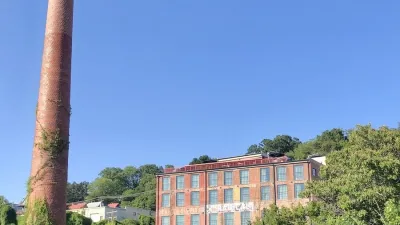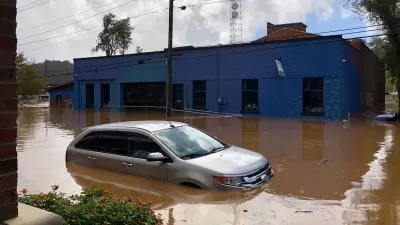Is CO2 buildup responsible for the enormous hurricane damage, or is it overdevelopment? Should we be spending so much attempting to reduce carbon emissions, or could it be better spent reducing problems that will be exacerbated by global warming?
Roger A. Pielke Jr., an environmental policy expert at the University of Colorado at Boulder, published an analysis "last month in the journal Natural Hazards Review, that is part of a controversial movement that argues global warming over the rest of this century will play a much smaller role in unleashing planetary havoc than most scientists think."
"Pielke acknowledges that there are enormous political hurdles to overcome with his strategy, and he recognizes that his views have made him and like-minded researchers the new pariahs of global warming."
"The radical middle -- that's how we talk about ourselves," said Daniel Sarewitz, a public policy expert at Arizona State University who has collaborated with Pielke on climate policy studies."
Hurricane analysis is used as an example of their perspective on global warming.
"Pielke's new analysis considered 207 hurricanes that hit the United States between 1900 and 2005. He looked at their strength and course and then overlaid them on a modern map that included all development over the years.
He found that the most devastating storm, had it occurred today, would be the Great Miami Hurricane of 1926, popularly known as the Big Blow. Its path through the now heavily developed southern tip of Florida would have caused $157 billion in damage, followed by Katrina, whose toll was $81 billion. Six of the top 10 most damaging storms occurred before 1945."
Thanks to Jennifer Alverson
FULL STORY: Global warming: Just deal with it, some scientists say

Trump Administration Could Effectively End Housing Voucher Program
Federal officials are eyeing major cuts to the Section 8 program that helps millions of low-income households pay rent.

Planetizen Federal Action Tracker
A weekly monitor of how Trump’s orders and actions are impacting planners and planning in America.

Ken Jennings Launches Transit Web Series
The Jeopardy champ wants you to ride public transit.

Washington Legislature Passes Rent Increase Cap
A bill that caps rent increases at 7 percent plus inflation is headed to the governor’s desk.

From Planning to Action: How LA County Is Rethinking Climate Resilience
Chief Sustainability Officer Rita Kampalath outlines the County’s shift from planning to implementation in its climate resilience efforts, emphasizing cross-departmental coordination, updated recovery strategies, and the need for flexible funding.

New Mexico Aging Department Commits to Helping Seniors Age ‘In Place’ and ‘Autonomously’ in New Draft Plan
As New Mexico’s population of seniors continues to grow, the state’s aging department is proposing expanded initiatives to help seniors maintain their autonomy while also supporting family caregivers.
Urban Design for Planners 1: Software Tools
This six-course series explores essential urban design concepts using open source software and equips planners with the tools they need to participate fully in the urban design process.
Planning for Universal Design
Learn the tools for implementing Universal Design in planning regulations.
Heyer Gruel & Associates PA
Ada County Highway District
Institute for Housing and Urban Development Studies (IHS)
City of Grandview
Harvard GSD Executive Education
Toledo-Lucas County Plan Commissions
Salt Lake City
NYU Wagner Graduate School of Public Service





























